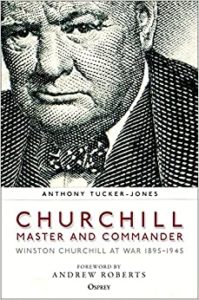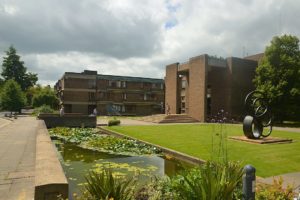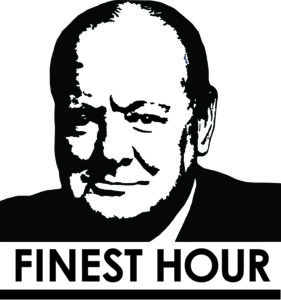
Finest Hour 195
The Professor and the Prime Minister
Frederick Lindemann and Winston Churchill
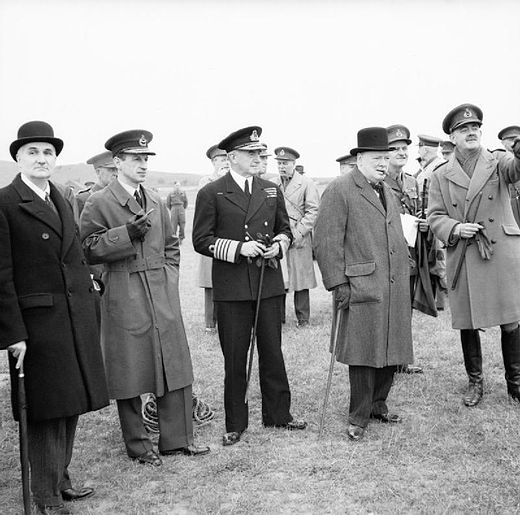
Professor Lindemann (left) on an inspection with Churchill, 1941
November 14, 2022
Finest Hour 195, First Quarter 2022
Page 14
By Kevin Ruane
Kevin Ruane is Professor of Modern History at Canterbury Christ Church University and author of Churchill and the Bomb in War and Cold War (2016).
In February 1952, Winston Churchill, recently returned as British Prime Minister, was becoming anxious about operation Hurricane, his country’s first atomic bomb test scheduled for the autumn. As often in the past when matters of science or technology perplexed him, Churchill turned to Frederick Lindemann, Lee’s Professor of Experimental Philosophy at Oxford University. The “Prof,” as he was almost universally known, had been Churchill’s chief scientific adviser during the Second World War and was presently Paymaster General. “Pop or flop?” Churchill asked. “Pop,” Lindemann replied.1 His confidence was warranted. On 3 October 1952, the British test device exploded at Montebello with a force greater than either of the atomic weapons used against Japan in 1945.
As Martin Gilbert has shown, Lindemann was “as close to Churchill in thought, proximity and ideas as any other individual.”2 The two first met in 1921 and formed a professional-political relationship, and in due course a friendship, which endured for more than three decades. Although no scientist himself, Churchill was a consistent champion of technological innovation and the application of science to warfare. In the view of physicist R. V. Jones, Churchill, “[a]lone among politicians, valued science and technology at something approaching their true worth.”3 He also esteemed scientists, but in the case of Lindemann, and what he called his “beautiful brain,” he exhibited near veneration.4
Patrician Physicist
Lindemann was born in April 1886 to a wealthy engineer-businessman of French-Alsatian lineage who settled in England and (like Churchill) an American mother. Later, Lindemann came to resent his birthplace; his mother had been visiting Baden-Baden when she went into premature labour, and Lindemann suspected (with justification) that despite his early naturalization as a British citizen, his German origins meant that he was never accepted as a genuine patriot by some within the British ruling establishment and social elite. After a childhood spent in Devon, Lindemann attended schools in Scotland and Darmstadt, studied at Berlin University, and obtained a doctorate in physics from Berlin’s Physikalisch-Chemisches Institut. Soon after the end of the First World War, he secured his chair at Oxford, was elected a Fellow of the Royal Society, and set about turning Oxford’s Clarendon laboratory into a world-ranking research centre. A fine tennis player, he competed at the Wimbledon Championships in 1920, probably the only Oxford professor ever to do so.5

2025 International Churchill Conference
Politically, Lindemann was on the far right. An unashamed inegalitarian, he believed in a fixed social order with an elite ruling class (with the workers kept in their lowly place), inherited wealth (of which he possessed a great deal), hereditary titles, anti-socialism, and white racial primacy. Despite this outlook, he came to loathe fascism, especially German Nazism. In that respect he and Churchill shared common ideological ground, but whereas Churchill’s animus was largely confined to Hitler and the Nazi Party, the “profoundly Teutonophobic Lindemann,” as Andrew Roberts describes him, extended his hatred to all Germans.6 Nor was this the only difference between the two. R. V. Jones remembered a classic odd couple: “Churchill…ate, drank, and smoked generously, and enjoyed a happy family life,” while Lindemann “was a non-smoker, an abstainer from alcohol, a vegetarian, and a lifelong bachelor.”7
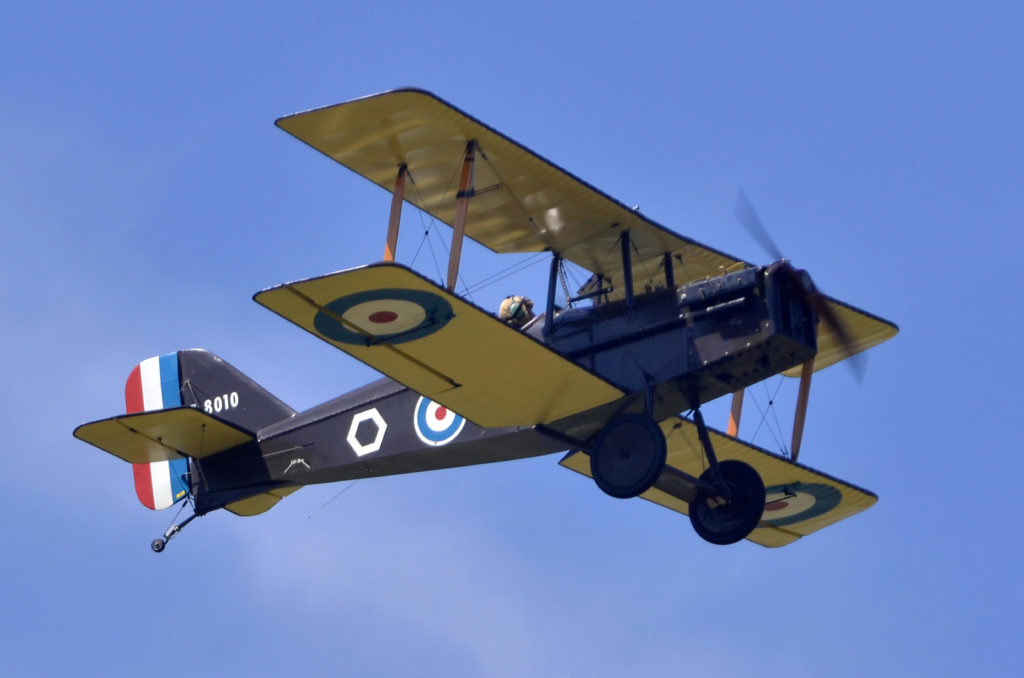
As a personality, Lindemann repelled more than he attracted. To friends he was loyal and generous, but these were few compared with his enemies. Arrogant and acid-tongued, he possessed a talent for provocation. His great wealth (including a chauffeur-driven Rolls Royce) and addiction to the society—and country houses—of the rich and powerful set him apart from most of his colleagues in the scientific world. “Why is Lindemann like a coastal steamer?” ran one contemporary joke. “Because he runs from peer to peer.”8 His physical appearance—tall, sallow, whippet-thin—and his regular black mode of dress (Melton coat, bowler hat, umbrella) added a hint of menace to his aura; one former student recalled a “Dracula figure….When he came into the room, you could feel the temperature fall.”9
Peacetime Partnership
At first sight, Lindemann might seem an unlikely candidate for admission to Churchill’s innermost circle, but behind the forbidding frontage there existed a quality which Churchill greatly prized: courage. Having failed to secure a commission, Lindeman spent the First World War working at the Royal Aircraft Factory at Farnborough where, amongst other things, he sought to find a way to reduce the loss of pilot life from tailspin. After devising a sequence of manoeuvres to counteract the problem, he refused to risk the life of any airman in putting his theory to the test. Instead, he learned to fly himself and took to the air in 1917. Deliberately sending his aircraft into a clockwise downward spiral, he successfully pulled away to safety before promptly repeating the process anti-clockwise to prove his first effort had not been a fluke. From then on, the Lindemann formula ensured that tailspin lost its terror for pilots. This feat amazed Churchill. “It seemed certain death,” he recalled. “But his theory worked….I did admire him so much.”10
Alongside Lindemann’s bravery it was his scientific acumen that attracted Churchill. “I have undertaken to write on the future possibilities of war,” he informed Lindemann in April 1924. “On this subject…I should very much like to have another talk with you.”11 The two did more than talk; they spent a week together at Chartwell working on an article entitled “Shall We All Commit Suicide?” Published that September in The Pall Mall Gazette (under Churchill’s name), the article marked the start of a fruitful collaboration on popular science writing (Lindemann providing the data and Churchill the engaging copy for a general readership). Looking back, their initial effort was prophetic. The tanks and poison gas of the Great War represented but “the first chapter…of a terrible book” of destructive science, the article averred. “Might not a bomb no bigger than an orange be found to possess a secret power to destroy a whole block of buildings, nay to concentrate the force of a thousand tons of cordite and blast a township at a stroke?”12 Some two decades before Hiroshima and Nagasaki met their atomic fate, Churchill, educated by Lindemann, predicted the advent of nuclear weapons.
Entering the 1930s, the Churchill-Lindemann popscience journalism continued to comment on nuclear physics. “Nuclear energy is incomparably greater than the molecular energy which we use today,” Churchill, via Lindemann, noted in “Fifty Years Hence,” published in The Strand Magazine in December 1931. “There is no question among scientists that this gigantic source of energy exists. What is lacking is the match to set the bonfire alight.”13 Within a year, English physicist James Chadwick had confirmed the existence of the neutron, the key to unlocking the nucleus of the atom wherein most of its mass, and hence its power, resided.
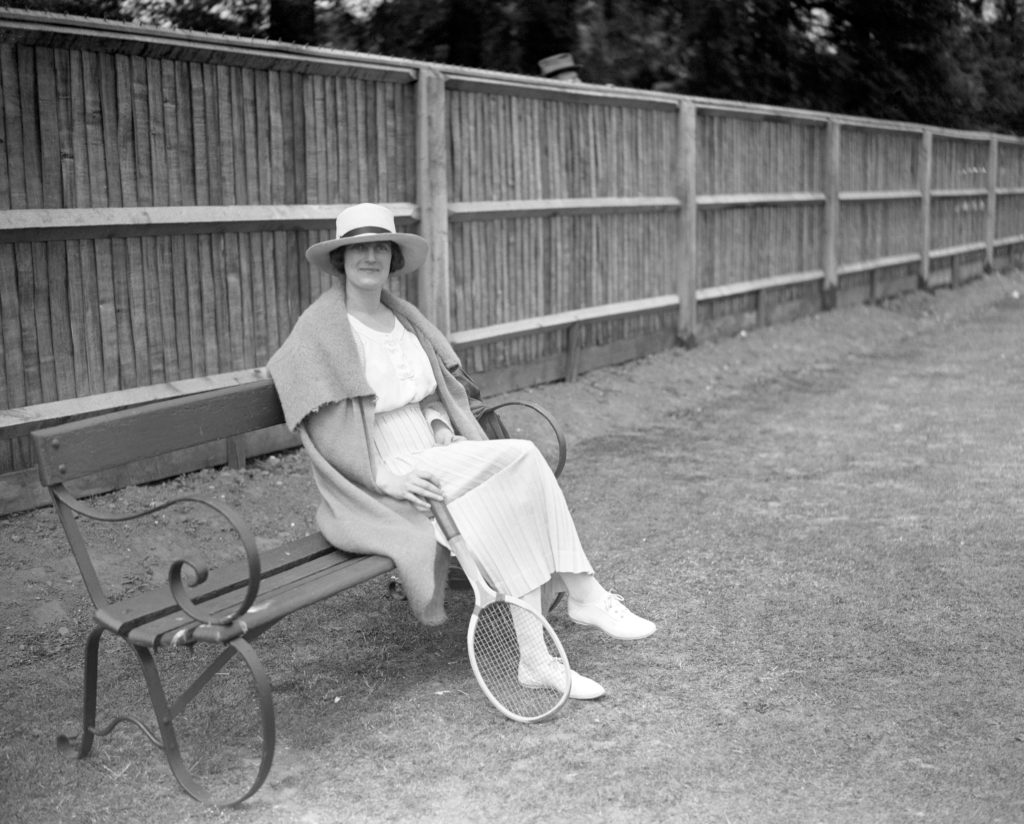
By this time, the ChurchillLindemann friendship had fully matured. They spent a lot of time together, including a 1932 driving tour of Marlborough’s Danubian battlefields. Lindemann often stayed at Chartwell; he became the most regular non-family overnight guest and got on famously with Clementine. As is well known, the thirties were a difficult decade for Churchill. Out of office and out of sorts, he came to rely on Lindemann’s intellectually stimulating and emotionally sustaining company. For his part, Lindemann became an enthusiastic ally in Churchill’s campaign to alert the National Government to the military danger posed by Nazi Germany and to the related need to commence wide-scale rearmament, especially in the air.
At the beginning of 1939, the international scientific community was astounded to learn that physicists at the Kaiser Wilhelm Institute in Berlin had succeeded, albeit on a small scale, in creating a nuclear chain-reaction using the heavy element uranium. Nuclear fission, as it became known, was the matchand-bonfire moment anticipated by Lindemann and Churchill in 1931. If fission proved to be controllable on a large scale, it could power a new worldwide industrial revolution. Equally, fission could provide the basis for a uranium bomb of staggering destructiveness. Briefed by the Prof on developments, Churchill concluded that “undoubtedly the human race is crawling nearer to the point when it will be able to destroy itself completely.”14
Adviser to the Prime Minister
In September 1939, the German invasion of Poland plunged Europe into war and brought Churchill’s time in the political wilderness to an end. The story of his comeback has been told many times, but what is not always appreciated is that Lindemann was with him every step of the way. When Churchill re-entered the Cabinet as First Lord of the Admiralty, Lindemann became his personal assistant and established S-branch, a statistical unit dedicated to compiling accurate independent data for the First Lord’s consideration. In May 1940, when Churchill entered Number 10 Downing Street as Prime Minister, he might have “felt as if I were walking with destiny,” but he did not walk alone.15 Lindemann, bowler-hatted and brollied, walked with him.
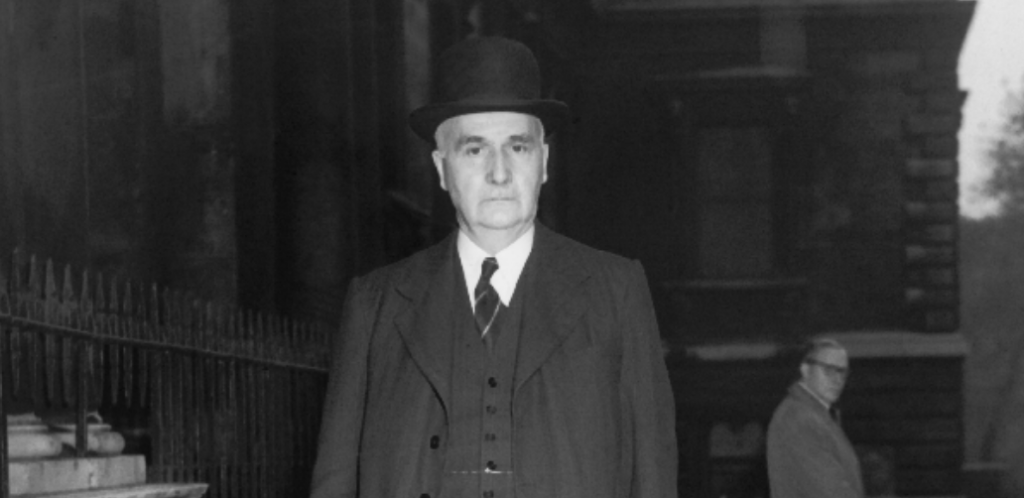
With Churchill’s blessing, Lindemann moved S-branch from the Admiralty to Downing Street. Before long its remit had expanded to cover a wide range of governmental concerns, from weapons production and beer rationing to food imports and shipping losses. Simultaneously, Lindemann’s personal authority was extended. While continuing to guide Churchill on scientific matters, he was soon commenting on top secret non-scientific documents sent to the Prime Minister, was privy to the sensitive Ultra output flowing from Bletchley Park, and took charge of MD-1, the defence engineering unit tasked with developing unorthodox weapons and nicknamed “Churchill’s toyshop.” Given licence to roam by dint of his close association with the great war leader, the Prof interjected himself into many areas of policymaking with a nosiness and insensitivity that bred resentment in Whitehall and suspicion in Westminster. In 1941, when Lindemann was made Lord Cherwell, there was muttering about prime ministerial patronage run amok, as well as gibes (“Baron Berlin”) about his Germanic background.16
For a time, recalled Jock Colville, there was “no more unpopular figure in Whitehall than Professor F. A. Lindemann,” but Churchill, loyal to his friend, rejected all criticism.17 During the war, one of the Lindemann qualities he came to depend upon was his knack of succinctly summarising complicated technical subjects. “Prof 10 lines please” became a regular request; between 1940 and 1945 Lindemann produced more than 2,000 minutes explaining to Churchill “in lucid, homely terms” many otherwise “incomprehensible truths.”18 In August 1941, the Prof performed one of his most important acts of compression when précising the top secret MAUD committee report that established the feasibility of a nuclear weapon. Driven by fear of a Nazi A-bomb in Hitler’s hands, Lindemann succeeded in winning Churchill’s support for a British weapons project, codenamed Tube Alloys.19 “Unless he had kept me well informed,” Churchill confirmed in 1945, “I should not have… turned on the full power of the State to what was then a remote and speculative project.”20
In giving a green light to Tube Alloys, Churchill invested heavily in Lindemann’s judgement, but his faith in his friend could sometimes be misplaced. In autumn 1941, when US President Franklin D. Roosevelt floated the idea of a joint Anglo-American atomic weapons effort, the Prof bridled and so, in consequence, did Churchill. The country possessing the atomic bomb, Lindemann maintained, “would be able to dictate terms to the world,” and that country must be Britain.21 Churchill’s ensuing rejection of FDR’s offer in favour of forging ahead with Tube Alloys bore the imprimatur of Lindemann’s atomic nationalism.
This proved to be a costly error of judgement. A year on, when even Lindemann reluctantly accepted that a joint project was the only practicable way forward, the Roosevelt administration was no longer interested in an alliance of equals. Instead, the British had to settle for junior partner status in the Manhattan Project. In 1946, when the US Atomic Energy Act slammed the door on American atomic cooperation with any other country, the British had no wartime treaty of alliance to fall back on in making a legal case for special exemption from the Act’s blanket exclusion. The blow to Britain’s post-war atomic power and weapons ambitions was considerable.
Had Churchill consulted other government scientists over the president’s offer, he would have found that most considered Lindemann’s estimate of Britain’s solo atomic prospects to be excessively optimistic. Churchill, though, looked only to the Prof. “If he had been killed at any point in the war,” Lord Moran wrote of Lindemann, “it is impossible to imagine any other scientist to whom Winston would have listened.”22 Churchill’s confidence in Lindemann’s competence ran deep, but the wider scientific community was more dubious about his professional judgement, as well as his penchant for pursuing unrealistic or madcap schemes like aerial mines. Some peer criticism was personal, a reflex reaction to Lindeman’s prickly temperament, but there was considerable truth in the view that his overwhelming managerial focus on improving the reputation of the Clarendon came at the expense of his career as a theoretician and experimentalist, which, in retrospect, probably peaked in the 1920s. Thereafter, his knowledge base grew broader than it did deep. Sir Ernest Rutherford, an early admirer, later dismissed Lindemann as a “scientist manqué,” while J. Robert Oppenheimer, after briefing him on the Manhattan Project, came away convinced “that guy will never understand a thing.”23
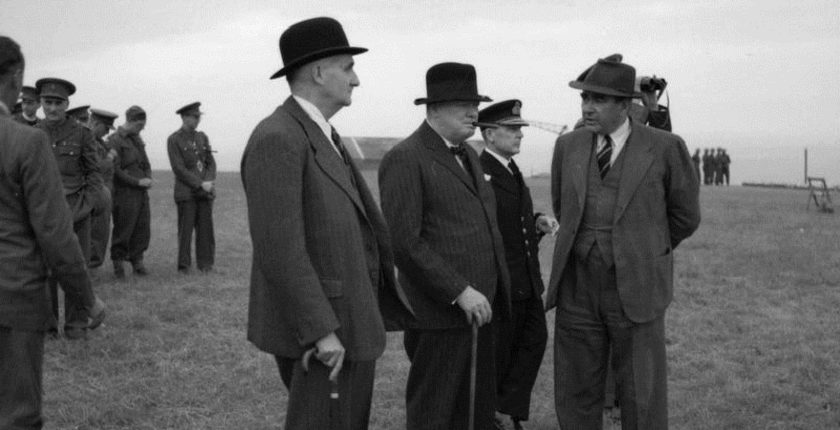
The “trouble,” scientistadministrator Sir Henry Tizard observed in 1940, “is that the man with the wrong ideas has, to support him, all the drive and enthusiasm of Mr Winston Churchill.”24 Tizard was by no means a Lindemann fan, but was Churchill, blinded by friendship, perhaps too great a one? Any assessment of Lindemann’s warrecord must perforce include entries on the positive and the negative side of the ledger (with Tube Alloys straddling both). Lindemann backed radar development in the 1930s, and supported its refinement and expansion once he was ensconced in Number 10, but he stubbornly and wrongly opposed the early introduction of the “Window” method of confusing enemy radar, and under-estimated the V-2 threat in 1944–45.
Among the important innovations successfully pushed by Lindemann, the proximity fuse and the bending of the wireless beam on which German bombers relied for night-targeting deserve particular commendation. Moreover, through rigorous statistical analysis, Lindemann discovered that RAF bombing raids on Germany in 1941–42 were less than one-third as effective as the Air Ministry claimed; this conclusion led him to press Churchill to back a shift to area bombing of German urban-industrial centres as a more damaging, if necessarily indiscriminate means of crippling enemy war production and eroding civilian morale. The ethics of this strategy continue to be debated, but at the time, and in strict military terms, Lindemann badly miscalculated the potency of area bombing.
“I Must Have Prof!”
In 1945, following V-E Day and the Conservative defeat in that summer’s General Election, the Prof returned to Oxford to resume his scientific-academic life, although at Churchill’s behest he agreed to attend meetings of the shadow Cabinet. When the Conservatives returned to power in October 1951, Lindemann, suffering from indifferent health, was initially reluctant to join the government, but Churchill was insistent: “I must have Prof!”25 Granted a two-year sabbatical from Oxford, he entered the Cabinet as Paymaster General. But much as Churchill appreciated the Prof’s input on sterling convertibility and floating exchange rates, it was that “beautiful piece of mechanism,” his scientific mind, he still coveted.26
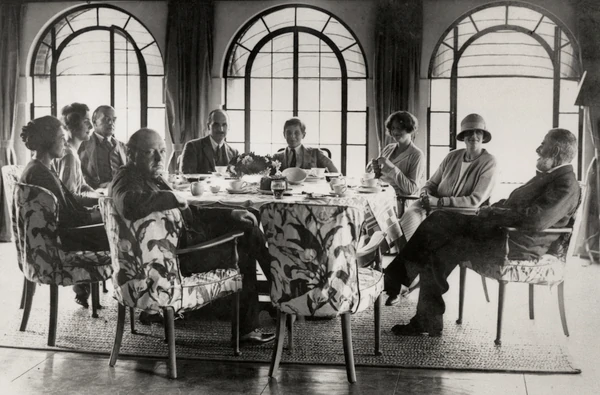
As we have seen, it was to Lindemann that Churchill turned in 1952 for reassurance about Britain’s A-bomb test. On that occasion, when Hurricane proved a triumph, both PM and Prof celebrated together, but in 1952–53 another atomic issue exposed their friendship to its greatest-ever strain. Lindemann had long wanted responsibility for Britain’s atomic power programme transferred from government to an independent agency, but Churchill insisted that the Ministry of Supply should retain primary jurisdiction. At one point, he became “angry, almost to breaking point, with the Prof,” but it was Lindemann who won out in the end.27 By the time a UK Atomic Energy Authority came into being in 1954, the spat had been forgiven and forgotten on both sides. With his sabbatical expired, Lindemann was back in Oxford, no longer a member of the government, but he and Churchill stayed close. In 1955, the Prof helped revise Churchill’s last great speech in parliament— on the subject of the hydrogen bomb—before he stepped down as Prime Minister.
In his final years, Lindemann often spoke of the need for a university in Britain akin to the Massachusetts Institute of Technology (MIT), but though he welcomed the decision to found Churchill College, Cambridge, with a scholarly emphasis on science, engineering, and technology, this only partly assuaged his ambition. In July 1957, aged seventy-one, he died peacefully in his sleep.
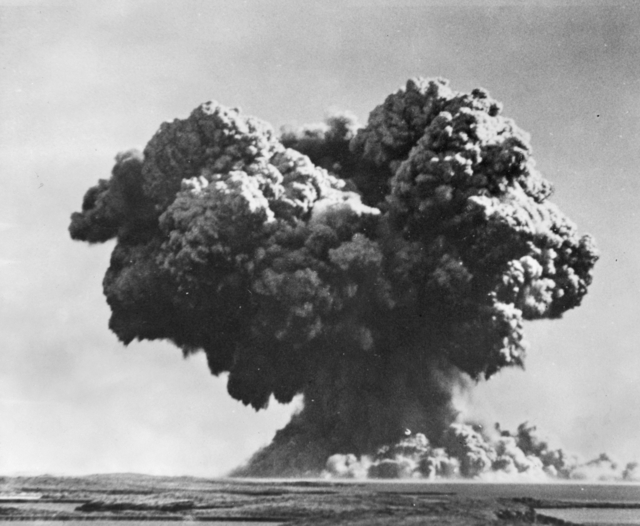
For all the admiration accorded him by Churchill, Lindemann was a divisive figure. Possessed, in Colville’s words, of a “personality less beautiful than his brain,” a “faithful friend but a dedicated hater,” he made many enemies.28 Dispassionate assessments of his life are rare, but his Royal Society obituary, penned by fellow physicist Sir George Paget Thomson, stands the test of time as a model of measured objectivity. Lindemann “no doubt…made mistakes, started or sponsored projects which turned out failures, and was sometimes tactless in his dealings with others as zealous for victory as he was himself,” Thomson conceded. “But when all proper weight is given to these considerations one is driven to conclude that on balance the good far outweighed the harm. At a time when Churchill carried the burden of the world, [Lindemann] was of great assistance to him.…The work he was asked to do was work which he was peculiarly well fitted for, and by doing it he served his master well, and through him, Britain.”29
Endnotes
1. Cabinet conclusions, CC(52)15, 11 February 1952, CAB 195/10, UK National Archives, Kew, London.
2. Martin S. Gilbert, Winston S. Churchill, vol. VI, Finest Hour, 1939–1941 (London: Heinemann, 1983). p. 593.
3. John Colville, The Churchillians (London: Weidenfeld and Nicolson, 1981), p. 31.
4. Lord Moran, Winston Churchill: The Struggle for Survival (London: Constable, 1966), p. 729.
5. Lindemann does not lack for biographers, but the best and most balanced is Adrian Fort, Prof: The Life of Frederick Lindemann (London: Cape, 2003). The scaffolding of Lindemann’s life in this article is mostly taken from Fort. Other notable works include Roy Harrod, The Prof: A Personal Memoir of Lord Cherwell (London: Macmillan, 1959); Lord Birkenhead, The Prof in Two Worlds: The Official Life of Professor F. A. Lindemann, Viscount Cherwell (London: Collins, 1961); and Thomas Wilson, Churchill and the Prof (London: Cassell, 1995).
6. Andrew Roberts, Churchill: Walking with Destiny (London: Allen Lane, 2018), p. 839.
7. R. V. Jones, “Churchill and Science,” in Robert Blake and William Roger Louis, eds., Churchill: A Major New Assessment of His Life in Peace and War (Oxford: Oxford University Press, 1993), p. 429.
8. Graham Farmelo, Churchill’s Bomb: A Hidden History of Science, War and Politics (London: Faber and Faber, 2013), p. 51.
9. Geoffrey Best, “Momentous Conjecture,” London Review of Books, vol. 26, no. 6 (2004), p. 37.
10. Moran, Churchill, p. 729.
11. Churchill to Lindemann, 3 April 1924, K62/1, Cherwell Papers, Nuffield College, Oxford.
12. Winston S. Churchill, “Shall We All Commit Suicide?” Pall Mall, 1924, copy in the Winston S. Churchill Papers, Churchill Archives Centre, Churchill College, Cambridge, CHAR 8/200A-B.
13. Winston Churchill, “Fifty Years Hence,” The Strand Magazine, December 1931, America’s National Churchill Museum online archive.
14. Churchill to Wood, 13 August 1939, cited in Kevin Ruane, Churchill and the Bomb in War and Cold War (London: Bloomsbury, 2016), p. 19.
15. Winston S. Churchill, The Second World War, vol. I, The Gathering Storm (London: Penguin, 1985 edition), p. 601.
16. Roberts, Churchill, p. 688.
17. Colville, Churchillians, p. 35.
18. Lord Blake, “Viscount Cherwell,” The Oxford Dictionary of National Biography, online at www. oxforddnb.com; Winston S. Churchill, The Second World War, vol. II, Their Finest Hour (London: Penguin, 1985 edition), p. 338.
19. Lindemann to Churchill, 27 August 1941, CAB 126/330, UK National Archives.
20. Churchill to Anderson, 22 August 1945, Churchill Papers, CHUR 2/3.
21. Lindemann to Churchill, 27 August 1941, CAB 126/330, UK National Archives.
22. Moran, Churchill, p. 728.
23. Rutherford cited in Farmelo, Churchill’s Bomb, p. 47; Oppenheimer cited in Ruane, Churchill and the Bomb, p. 119.
24. Ronald Clark, Tizard (London: Methuen, 1965), pp. 243–45.
25. Fort, Prof, p. 318.
26. Lord Ismay, The Memoirs of General the Lord Ismay (London: Heinemann, 1960), p. 35.
27. John Colville, The Fringes of Power: Downing Street Diaries 1939–1955 (London: Hodder and Stoughton, 1985), p. 643.
28. Colville, Churchillians, p. 32.
29. Biographical Memoirs of the Fellows of the Royal Society, vol. 4 (London: Royal Society, 1958), p. 68
Subscribe
WANT MORE?
Get the Churchill Bulletin delivered to your inbox once a month.

